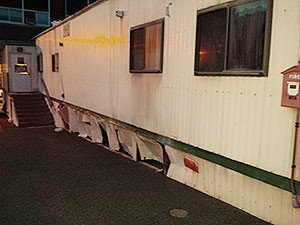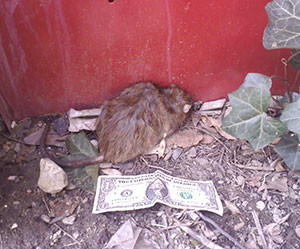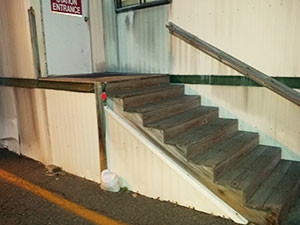 By William C. Shelton
By William C. Shelton
(The opinions and views expressed in the commentaries of The Somerville Times belong solely to the authors of those commentaries and do not reflect the views or opinions of The Somerville Times, its staff or publishers)
Almost since it was converted from an MBTA car barn, Union Square’s public safety building has continually threatened the health of the first responders who work in it. When I first reported on this, eight police personnel had received cancer diagnoses, and two dozen out of 127 sworn officers carried respiratory inhalers—incidences far to high to be random.
Over the ten years since I wrote that column, conditions for police personnel who work there did not change significantly. For firefighters, they grew worse.
Flooding and equipment damage caused by flooding have been a regular event at the site, going back to when the MBTA owned it. But in June 1998, five feet of raw sewerage and storm runoff filled the portion of the building used by the Fire Department. Retreating floodwaters left toxic black mold growing inside the walls and ventilation system.

Leaking windows and deteriorating siding were a constant problem.
Chief Kelleher refused to subject firefighters to the ongoing health threat. That September the city leased a doublewide trailer to temporarily house the Fire Prevention Bureau and Engine 3, the city’s busiest fire company.
On Christmas Eve 1998 they moved into cramped quarters consisting of a small kitchen with attached bathrooms, a small dayroom with a TV, and four rooms for firefighters that are smaller than most prison cells.
Floods continued over that period. But even without them, sewerage regularly backed up through floor drains and puddled on the station floor, where firefighters stowed protective gear in readiness for the next call. Receding sewerage left residual filth and odor.
Rats set up operations bases in the trailer’s fiberglass insulation from which they launched sorties to chew through structure and walls. Strewn along their paths were deposits of the only thing that rats can make by themselves.

A dollar bill indicates the scale of Company 3’s rodent roommates.
The threat of rat-borne fleas and diseases like murine typhus and hantavirus pulmonary syndrome prompted regular extermination efforts. The resulting carcasses, putrefying in the rats’ inner-wall redoubts, produced an odor that firefighters took home with them, embedded in their clothing. Dead rats and standing water drew insects into the trailer.
Conditions became so intolerable that the wall insulation was removed. Together with drafts produced by the slow disintegration of exterior cladding, the absence of insulation resulted in winter temperatures unfit for human habitation.
Firefighters brought electric space heaters from home, but pipes regularly froze. When the septic pump froze, raw sewerage oozed onto the corridor from the interior stairs.
Firefighters regularly contracted the illnesses associated with sick buildings, while the trailer’s framing slowly buckled. Doorframes were no longer plumb and level, requiring almost weekly adjustment to permit smooth opening and closing.
Windows leaked from day one, while roof leaks took longer to develop. Continuously sodden carpet weakened the floor. Plywood screwed on top of it kept firefighters from falling through, but did little for the moldy smell.
Repairing the outside stair railing that rotted away took almost two months. Its replacement was wooden studs, screwed together without balusters.

Stairs went without a handrail for two months.
In 2009 the American Recovery and Reinvestment Act (ARRA) made $210 million in grant money available to build new fire stations. Requirements gave priority to jurisdictions that already owned potential station sites, and higher priority if they had obtained permits.
Somerville did not and had not. Eleven years after the Union Square station moved into a trailer, the city was unprepared to apply for a grant, but it successfully applied for an ARRA grant that paid for infrastructure to support Assembly Square development.
In 2011 the Fire Prevention Bureau moved over to the Department of Public Works because it could no longer function in the trailer. This month conditions that firefighters had stoically endured for over sixteen years became so inhumane that Chief Kelleher moved Engine Company 3. It now shares the cramped Broadway headquarters building with Rescue 1, Ladder 2, Engine 2, and the Deputy Chief.
In today’s dollars, the city has paid over $420,000 to lease the trailer. The lease now requires payment for “Removal of Equipment and Return Freight.”
Union Square has no fire station as we anticipate massive new development there and in Boynton Yards. The SomerVision comprehensive plan aims to locate 85% of new development in transformational areas, including Brickbottom and Inner Belt, directly to the East. And now we are told that our city should add 9,000 new housing units over the next sixteen years.
The Board of Aldermen’s Finance Committee this week considers a recommendation to take property at 515 Somerville Avenue. The plan would be to build a station there, and to close the Lowell Street station. The new station would serve the Lowell station’s catchment area and Union Square.
Or, a new Assembly Square station that the Matrix Fire Consulting Group recommended in 2010 would serve Union Square, Inner Belt, and Brickbottom. A site across Middlesex Avenue from the K-Mart is under discussion.
Neither of these schemes is adequate. Fulfilling SomerVision development goals will sharply increase population, the burnable built environment, the number of emergency responses required, and traffic.
All the city’s traffic calming measures—diagonal parking, bicycle lanes, curb extensions, lane narrowing, speed bumps—are having their intended effect. But one outcome is slower emergency response times.
Two or three minutes can make a significant difference in the intensity and volume of a fire and how dangerous it is to firefighters. It can make a difference in whether a heart attack patient lives, dies, or sustains brain damage.
Sacrificing needed tax revenue in order to locate a city library or administrative offices on prime Union Square property would be foolish. But locating a fire station there to protect the properties that generate that revenue and the people who inhabit them is just common sense.
The truth is that we need the Lowell Street station, and a Union Square station, and an Assembly Square station. And we need to house our firefighters in healthy environments that enhance their ability to protect us.
A column by Mayor Curtatone appeared in this space last week. Entitled “Let’s aim higher,” it begins, “One of the many accolades we’ve earned together over the past decade and that we can rightly be proud of is ‘The Best Run City in Massachusetts.’”
Let’s aim higher by taking care of the municipal employees who actually run our city. Let’s protect those who protect us.















Reader Comments